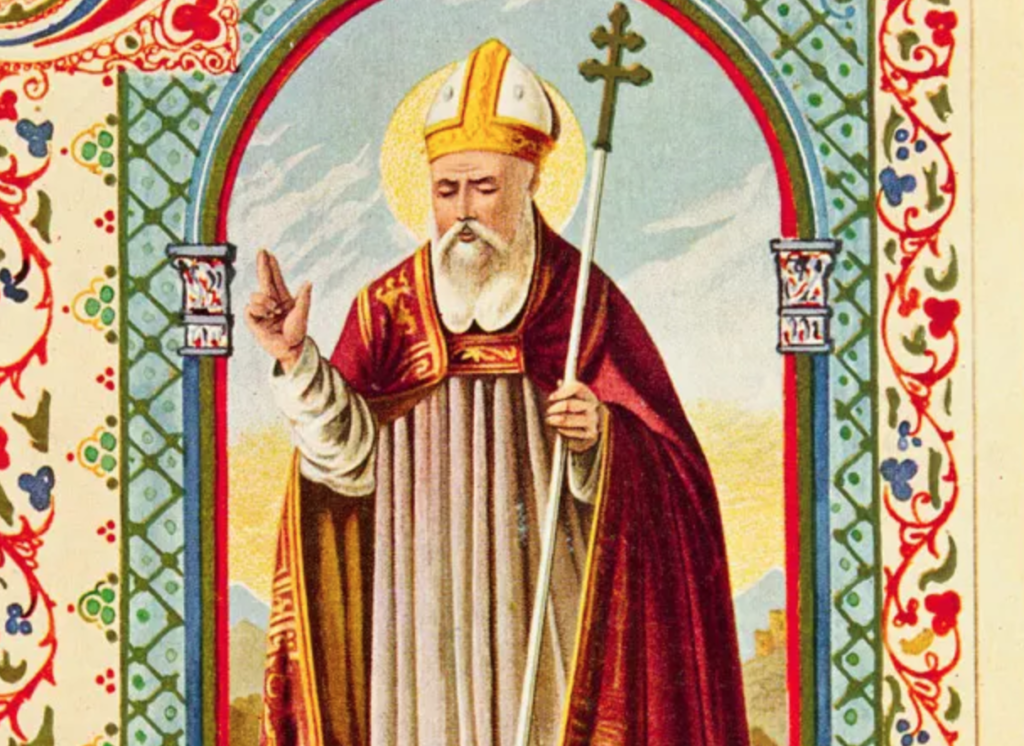Ah, you say in your best Irish accent, “the lad is the patron saint of Ireland who drove those slimy snakes off the Cliffs of Blarney into the Irish Sea while wearing a shamrock on his Irish flat cap.”

Uh no. Actually, born Maewyn Succat to Roman British parents, he was captured by Irish pirates at the age of 16 and forced to work as a shepherd in Ireland. At 22, he converted to Christianity and escaped back to Britain. He was captured again by the French where he learned to become a cleric and missionary for, of all places, Ireland. Choosing the name Patricius, he had a vision that caused him to return to Ireland and eventually become their patron saint and bishop.
I saw a man coming, as it were from Ireland. His name was Victoricus, and he carried many letters, and he gave me one of them. I read the heading: “The Voice of the Irish”. As I began the letter, I imagined in that moment that I heard the voice of those very people who were near the wood of Foclut, which is beside the western sea—and they cried out, as with one voice: “We appeal to you, holy servant boy, to come and walk among us.”
However, the journey from shepherd slave to Christian Bishop was not easy. He was often forced to leave to preach and live on small offshore islands where over time he gained enough followers to ensure his safety back on the mainland. He eventually converted the sons of Kings and witnessed the building of over 300 churches.
Ah yes, the snakes. There are early written records of a legend similar to the Biblical account in Exodus where Moses and Aaron face off with the Pharaoh’s sorcerers, staffs in hand. The staffs turn into snakes, and Aaron’s snake-staff consumes the Pharaoh’s snake staff to win the day. However, Patrick lived in the 5th century and the absence of snakes in Ireland has be recorded from as early as the 3rd century.
So what about the shamrock? It’s not impossible that St. Patrick actually used the 3-leaved Shamrock to introduce his converts to the concept of the Trinity. The Irish already had triple deities and held the number three with high regard, so Patrick’s use of the shamrock may have helped him win favor with the Irish.
All this said, in 1737, “The Wearing of the Green” was being played at the St. Patrick’s Day parade, a full century before the huge influx of Irish immigrants to New England after the great famine in mid-19th century Eire. St. Patrick’s Day was indeed destined to become an American tradition. We wouldn’t want it any other way.